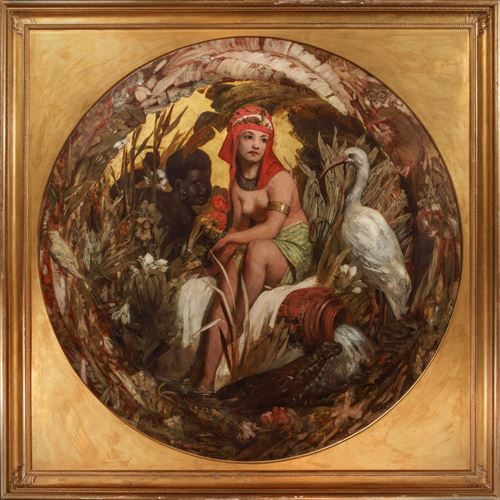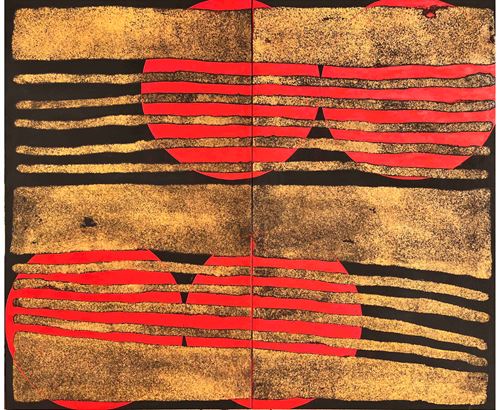'Allegories of Africa and America’
description
Eduard Charlemont (1842-1906)
'Allegories of Africa and America’
Allegory of Africa, signed and dated Ed. Charlemont 1872 lower left
Oil on canvas, H. 153 x W. 153 cm (each tondo)
Provenance
- Collection Andrew Lloyd-Webber, United Kingdom
- Auction, Sotheby’s Billinghurst, 15 september 1999, lot 775
- Private collection, Switzerland
Detail Description
Eduard Charlemont (1848, Vienna) was a distinguished painter. He was born in an artistic family. His father Matthias Adolf Charlemont (1820-1871) was a well-known miniature painter, his brother Hugo Charlemont (1850-1939) an impressionist landscape painter and brother Theodor Charlemont (1859-1938) a sculptor. Eduard Charlemont made name for himself only at the age of fifteen when he exhibited his works for the first time at the Academy of Fine Arts in Vienna, where he also studied. He exhibited for the first time at the Paris Salon in 1878, where he won his first prize. Charlemont was called into Hans Makarts (1840-1884) studio, who by that time was a leading figure in the artworld of Vienna and an artist luminary of the Vienna Ringstrasse era.
Charlemont developed a new and unique style based on the 'Neo-Baroque’ style of Makart, a crossing from 16th century Venetian paintings and French Rococo painters from the 18th century. His penchant for idyllic, playful compositions, characterized by elegance, showed up as a recurring constant in the artist’s oeuvre. This style is also expressed in the tondi presented here.
The first work shows the decorative allegory of the continent Africa with its respective flora and fauna. The central female figure is arranged in an illusionistic, dreamy ideal space that functions as a projection surface for the Western fantasies that were prevalent at that time. It is a symbolic representation.
The second work, the 'Allegory of America' stands as a testament to his enduring fascination with cultures beyond the boundaries of Europe. Within this canvas, Charlemont skillfully captures a tableau of individuals and scenes that serve as representatives of various facets of American culture. The composition is rich with symbolism, including the presence of an indigenous figure adorned with a resplendent headdress, a nod to the diverse native cultures of the Americas. Colonial influences are also discernible, as evidenced by the woman's fan, evoking echoes of European presence. Exotic flora and avian motifs further underscore the allegorical portrayal, serving as emblems of the Americas' unique biodiversity.
These works demonstrate the romantic lens through which Europeans regarded people from the colonies. They also demonstrate his adeptness in weaving together various cultural elements into a cohesive narrative. The meticulous attention to detail and the nuanced interplay of light and color are characteristic of Charlemont's signature style, allowing viewers to immerse themselves in a representation of a different culture. The fascination with his two depictions of America and Africa lasted not only during the artist's lifetime, but also to this day. The tondi remained in the collection of the composer, impresario, and art connoisseur Andrew Lloyd Webber (born in 1948 London) until the 1990s. A similar work, but an allegory on Asia, caused a battle between bidders in a French auction in 2021, resulting in a record price for paintings by Charlemont.

contact
Zebregs&Röell Fine Art and Antiques
1017 DP Amsterdam
Netherlands
T +31(0)620743671
M 0620743671
dickie@zebregsroell.com
www.zebregsroell.com


_HansBroek_T638348676804548248.jpg?width=500&height=410&mode=crop&format=jpg&scale=both&qlt=80)


